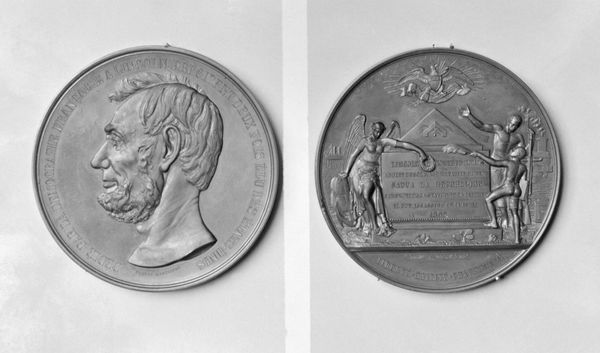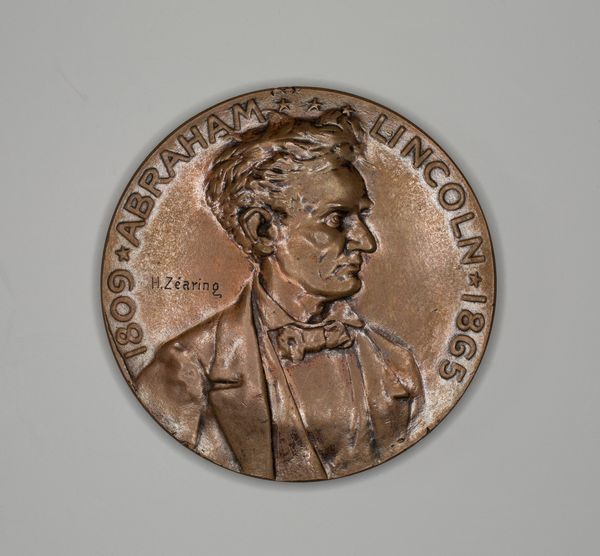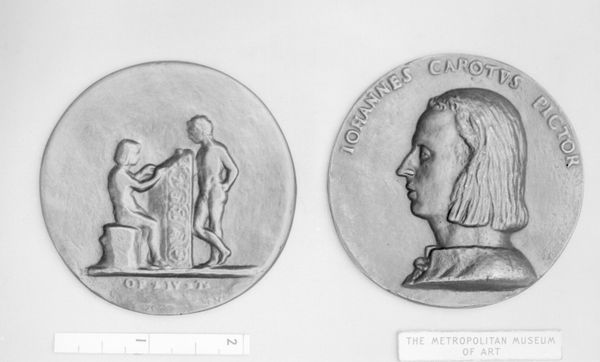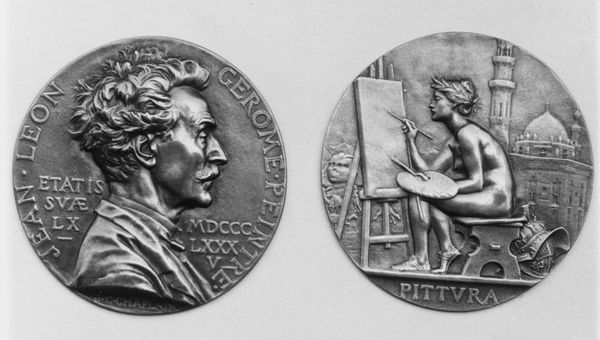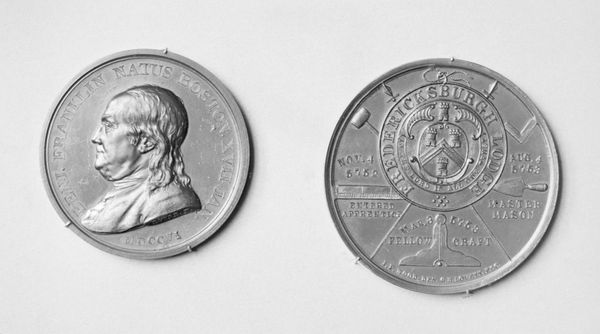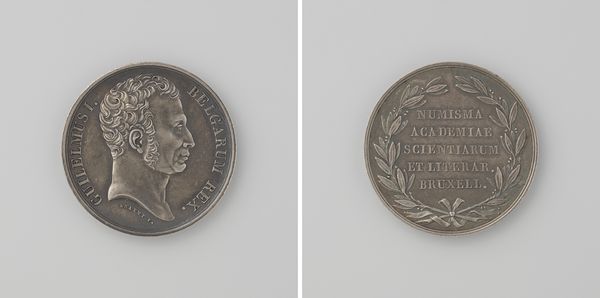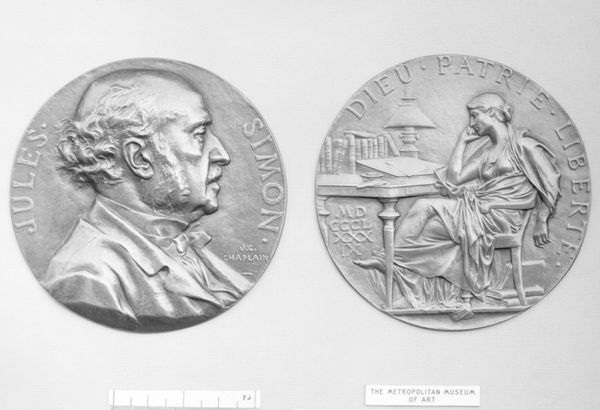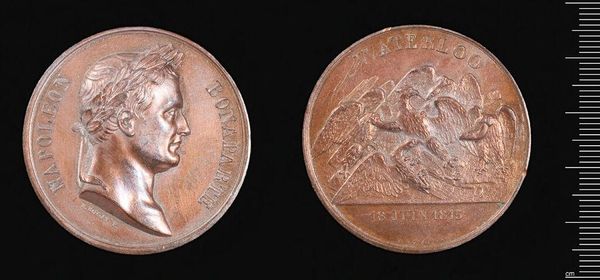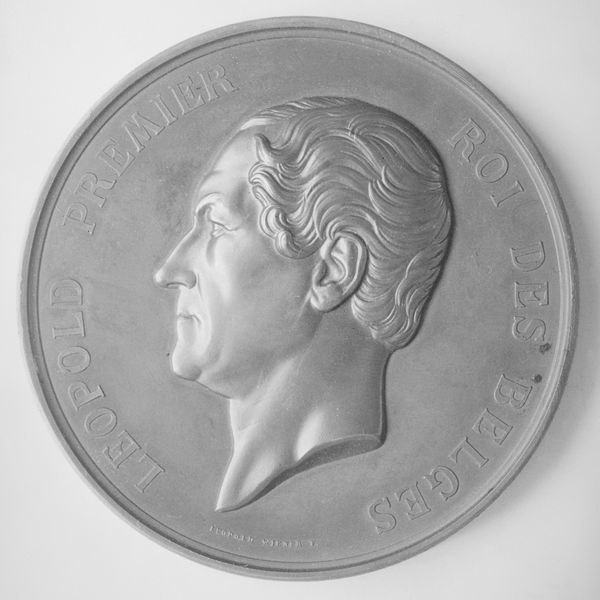
metal, sculpture
#
portrait
#
medal
#
metal
#
sculpture
#
sculpture
#
men
#
decorative-art
#
profile
Dimensions: Diameter: 5 in. (127 mm)
Copyright: Public Domain
Editor: Here we have "Adam Smith, Political Economist," a metal sculpture from 1876, by François-Joseph-Hubert Ponscarme. It has this sort of commemorative feel. I'm curious – what catches your eye about this piece, thinking about its materials and context? Curator: Well, consider the deliberate choice of metal for a commemorative portrait. It speaks to permanence and value, echoing the economic theories Smith championed. Medals like these weren't simply aesthetic objects; they were instruments of public memory, manufactured and distributed within a specific social and political landscape. Editor: So, you're saying the material itself, metal, reinforces the ideas associated with Adam Smith? How does that challenge conventional views of sculpture? Curator: Exactly. Think about who would have commissioned this, who produced it, and who consumed it. This wasn't about "artistic genius" in the Romantic sense, but about crafting a durable object with a specific message for a specific audience. The production process is part of the art's meaning. The scale also diminishes "high art" notions, enabling accessibility to a broader public through distribution of these metallic objects. Editor: That's a great point. It kind of demystifies the whole "art" thing and brings it back down to earth, literally, in terms of the material. Does the industrial nature of making multiple medals cheapen the artistic value or elevate it, since there is greater exposure? Curator: It reframes it. Forget preciousness. This is about democratizing access to the image and the ideas Smith represented, through the labor and materials used. It prompts us to consider art not as a unique masterpiece but as a mass-produced commodity imbued with social and ideological significance. Editor: This makes me rethink how art functions in society, as less of an isolated experience and more of a product of, and contributor to, its social context. I appreciate this expanded understanding. Curator: It really illuminates how material choices reflect societal values. Thank you for helping to bring that into sharper focus.
Comments
No comments
Be the first to comment and join the conversation on the ultimate creative platform.

